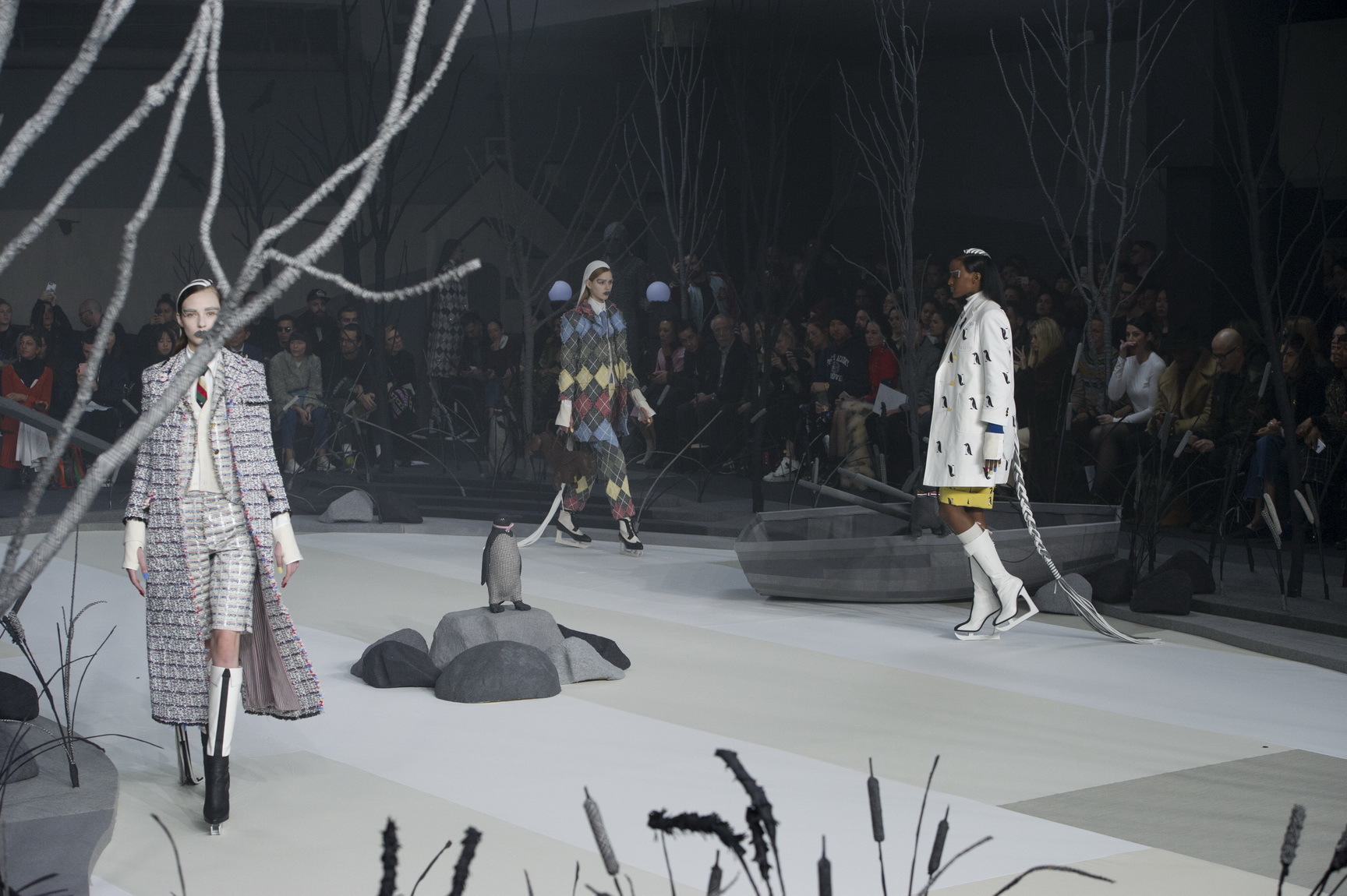Last season, Thom Browne converted Skylight Moynihan Station into a fully tiled 60s spa and threw a pool party, where each model sported a trompe l’oeil sheath dress designed to invoke preppy 60s separates. Yesterday evening, the designer took a completely opposite approach to his fall/winter 17 show.
Browne constructed a quaint New England farm town and, in its center, an ice skating pond. The entire set was covered in fabrics. Barren trees were wrapped with strips of herringbone tweed, the ice was a swath of creamy wool, the reeds dotting the pond’s banks were rendered in pinstripes — even the full-sized rowboat docked at the water’s edge was sided with rich grey flannel. Models wore shoes with platforms in the style of skate blades, and as with actual ice skating, some glided, others were slightly wobbly.

Yesterday’s clothing was also a considerable departure from the country club Jackie O vibes Browne relished last season. There wasn’t a dress to be found in his new offering. And if there was any confusion about it, the garments clarified the matter. One jacket bore the message: “it’s too cold for a dress.” Another came finished with a large pin that had a picture of a dress behind the red “NO” symbol.

Instead, Browne’s ice dancers wore suiting elements that felt both fresh and familiar. The first few looks flexed a little of the deconstruction expertise that shaped his 20s-inspired fall/winter 16 collection. He also revisited quilted intarsia techniques — this season rendering a farmhouse and white picket fence. Most notably, Browne carried over some of the puffers he’s been playing with for the past eight years at the helm of Moncler Gamme Bleu. Yesterday, they formed trousers, cropped overcoats, ankle-length vests, and a tuxedo with an enormous train.
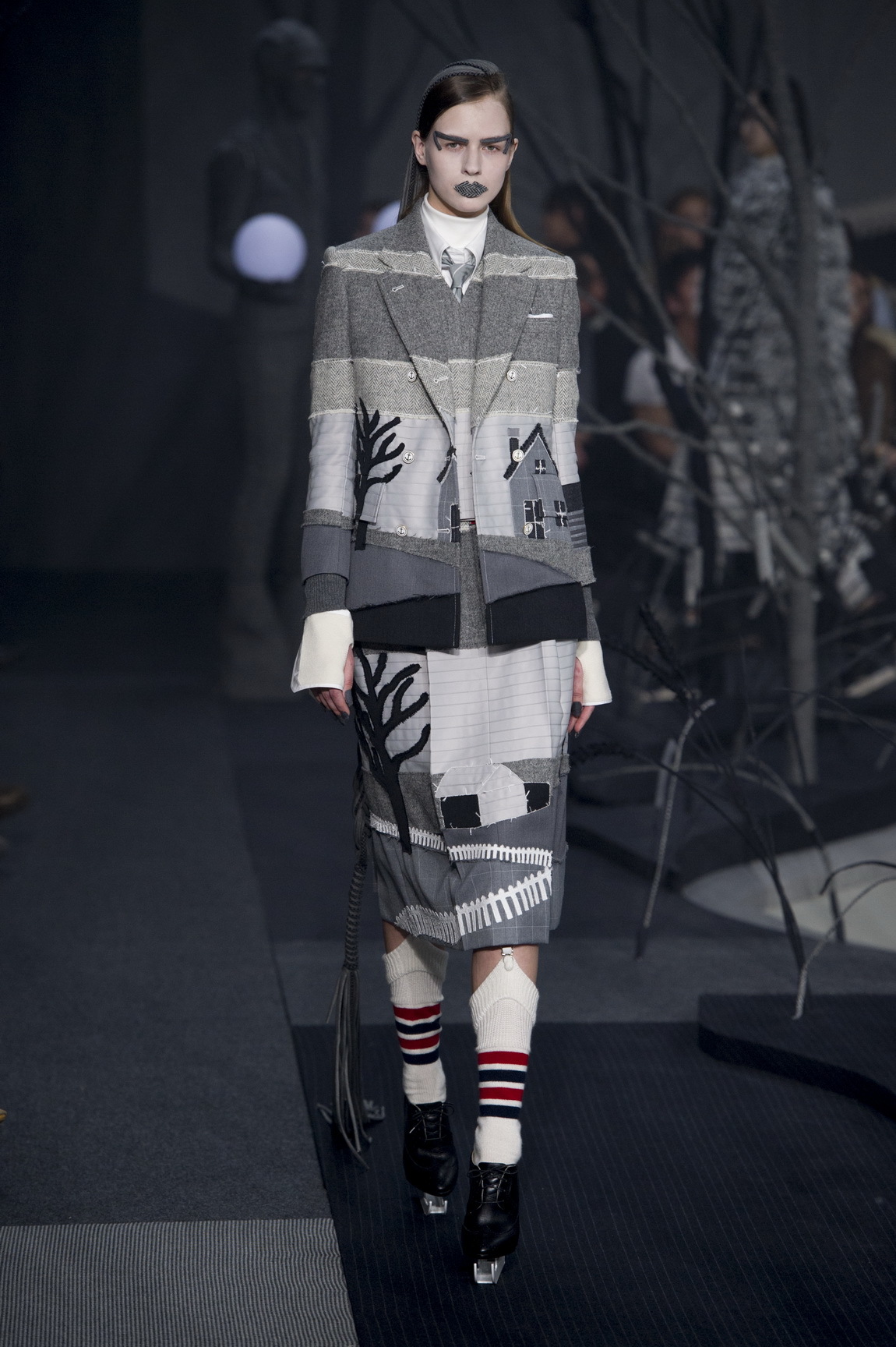
Browne also ventured into some unfamiliar waters. The cut and proportion of many fall/winter 17 garments were much looser, boxier, and longer than the precisely cropped tailoring that makes his silhouette so distinctive. We’re not talking about zoot suits (it is Browne after all), but the shape of some bermuda shorts felt new. So did the kind of looped fabric developed for this collection, giving overcoats and floor-grazing skirts an unexpected shagginess.
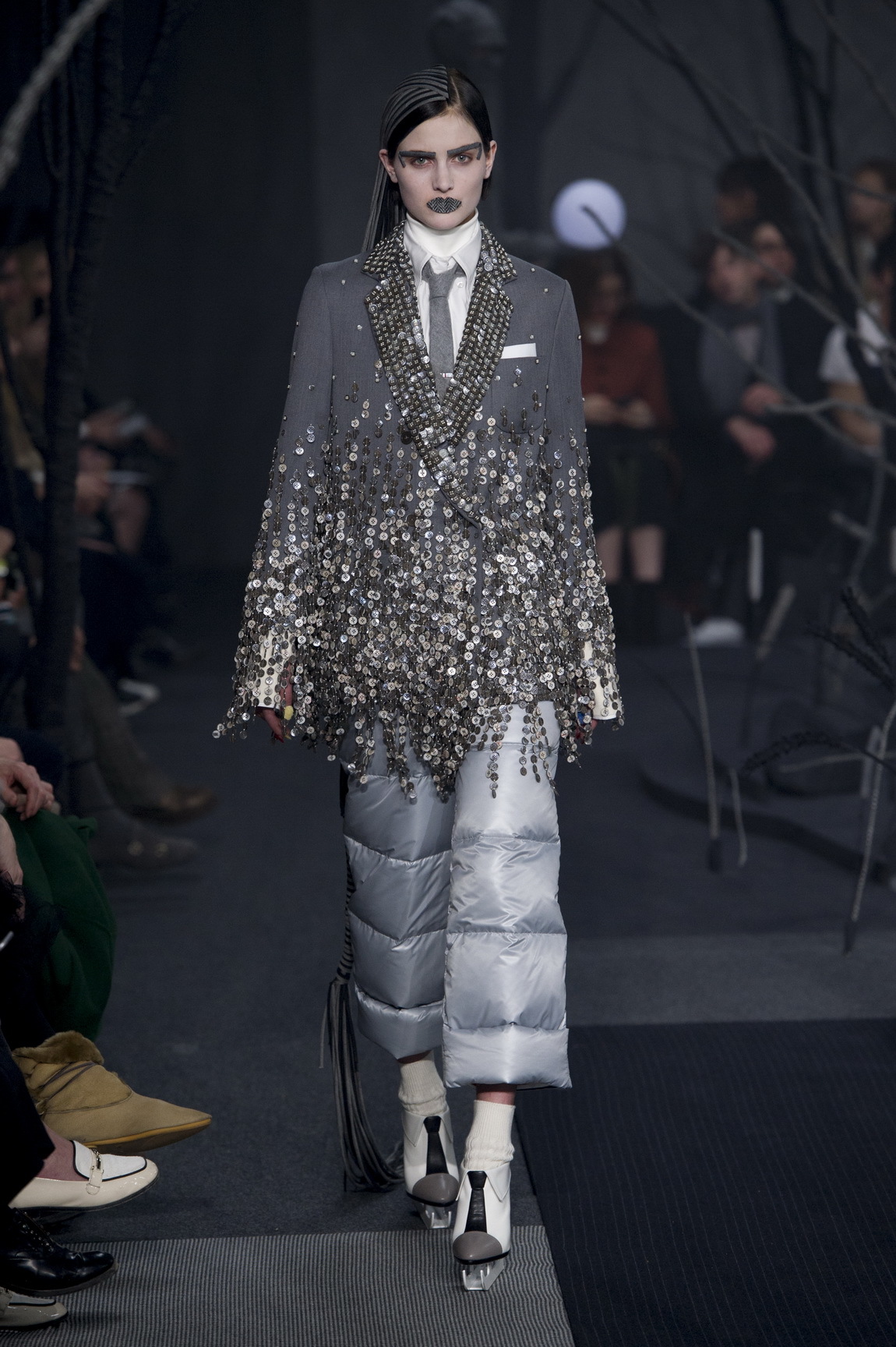
Also unexpected: the show’s soundtrack. It began with the sort of swelling orchestral flourishes expected of the ever-theatrical Browne, before mutating into a sort of thumping electronic beat, and later, a clash of electric guitars. Such disparate sounds encouraged viewers to consider what they saw in a slightly different way. For example: the towering figures holding glowing orbs at each corner of Browne’s pond were presumed to be human lampposts. But as the base bumped, they began to look like Leigh Bowery-ish club kids. In Browne’s world, nothing is ever certain, or as it seems.
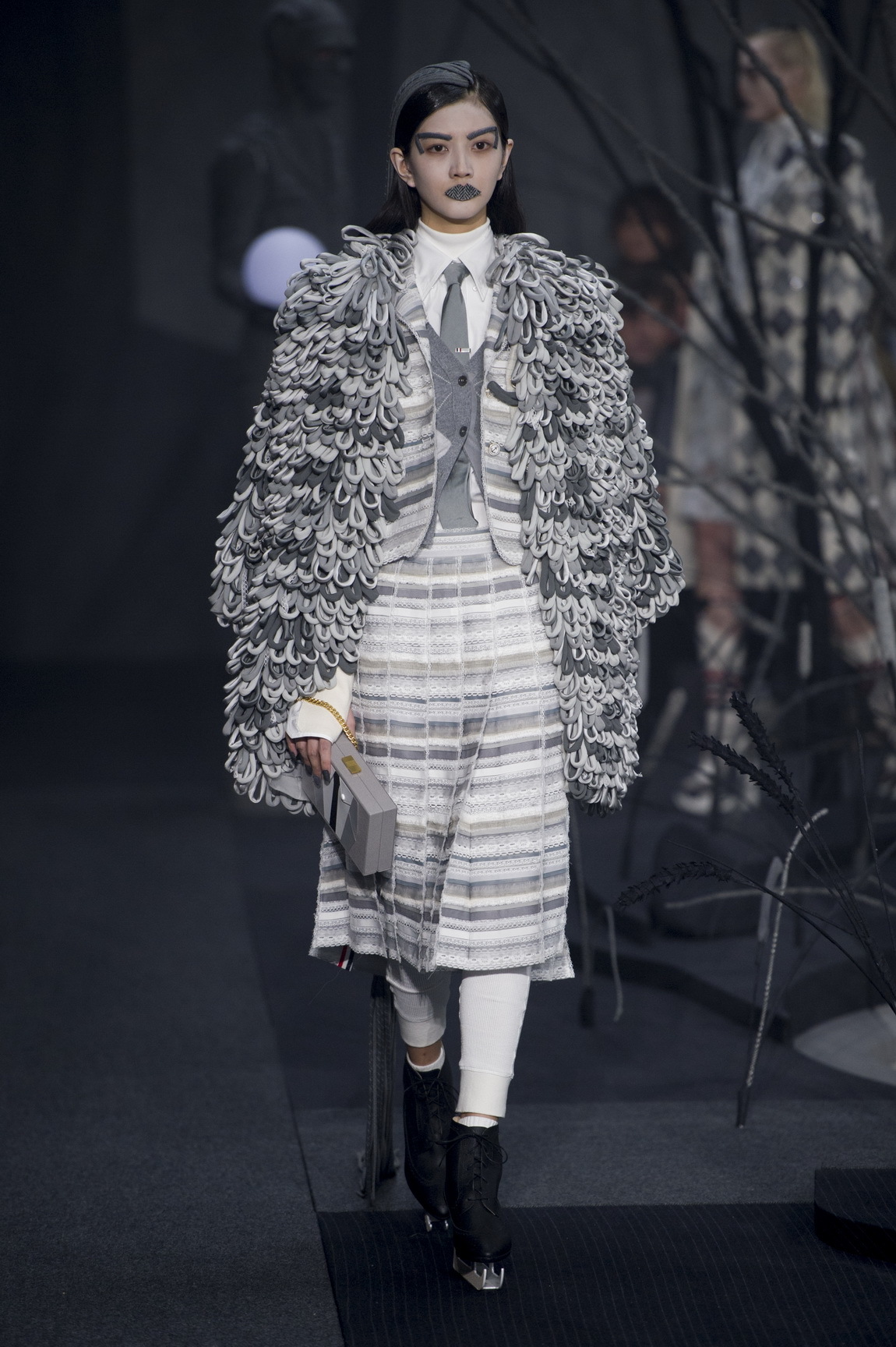

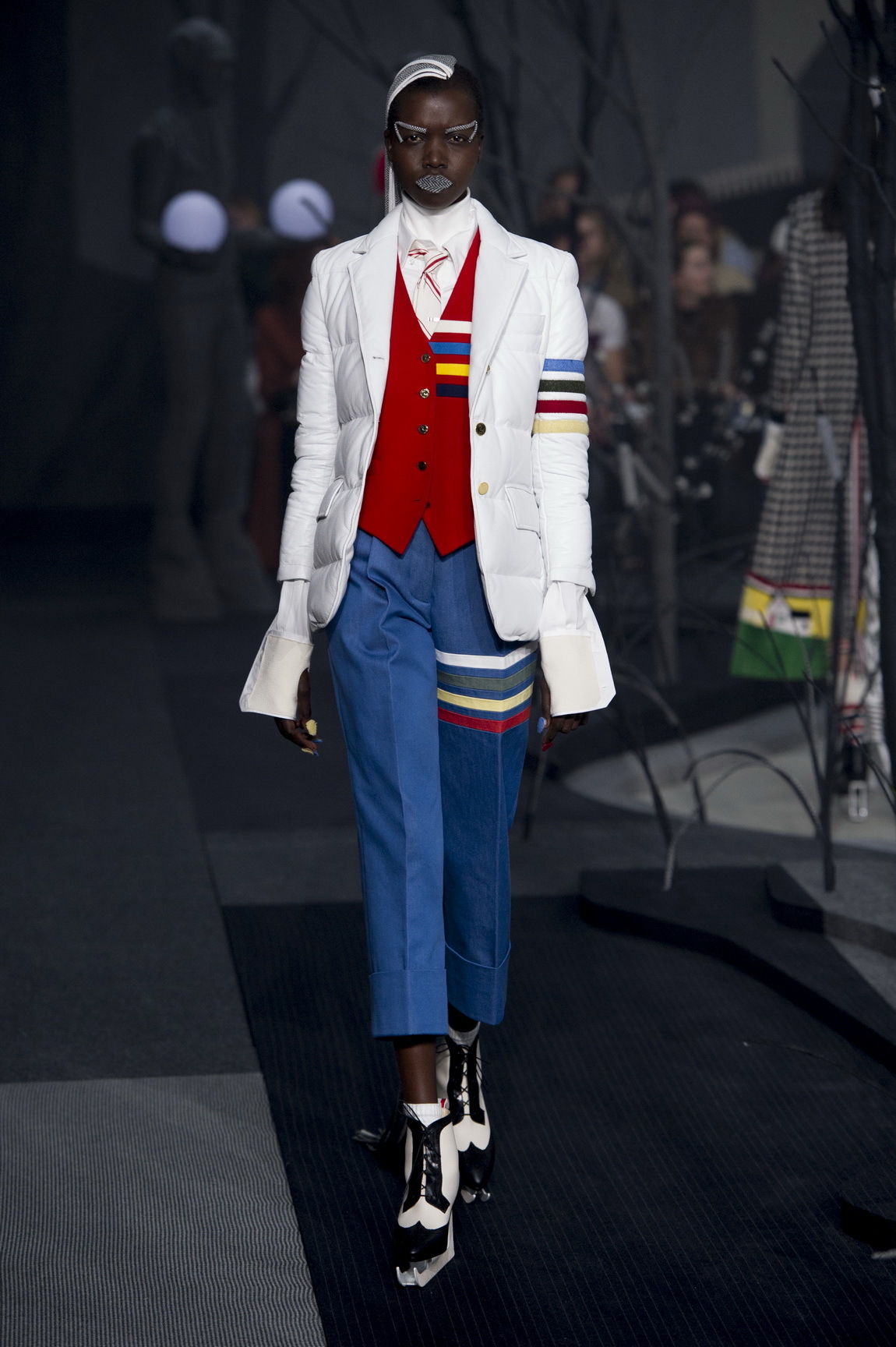
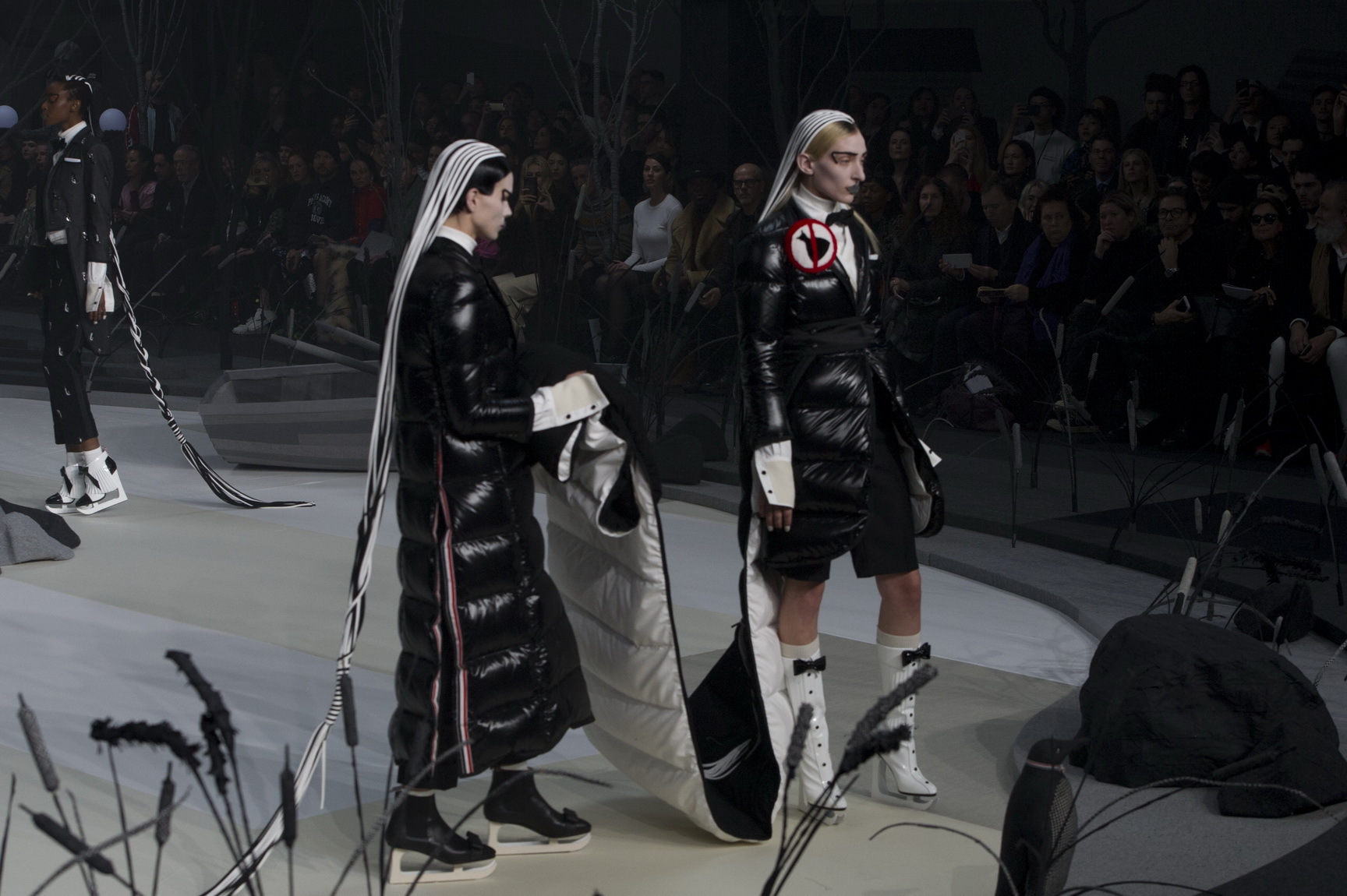
Credits
Text Emily Manning
Photography Stefan Stoica
